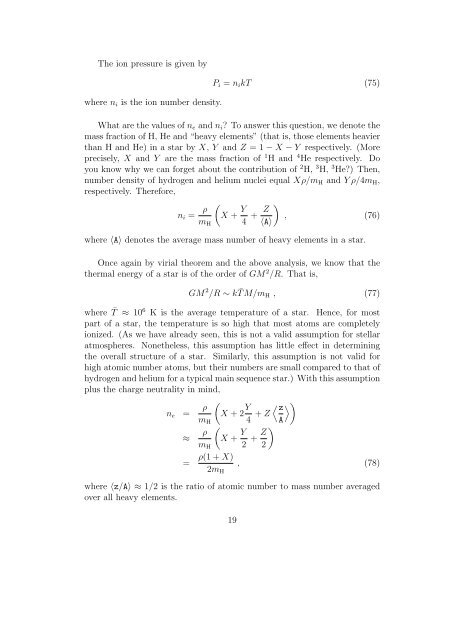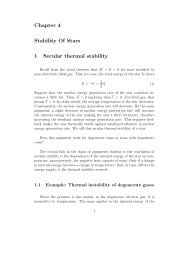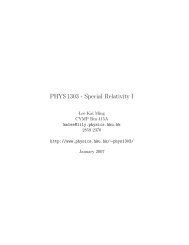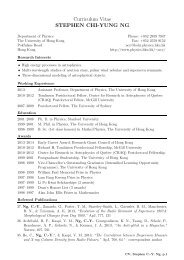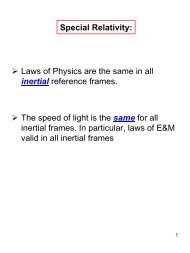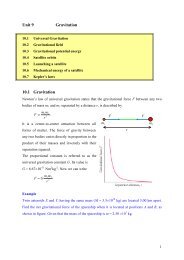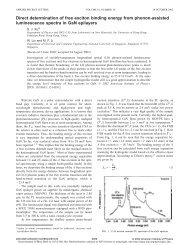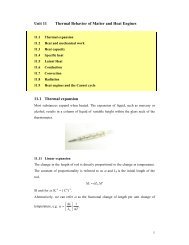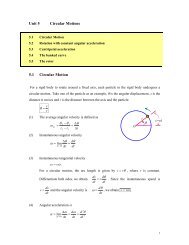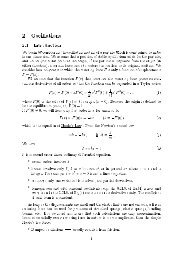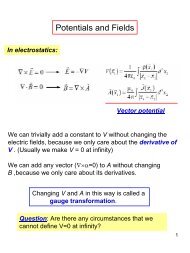Chapter 2 Stellar Structure Equations 1 Mass conservation equation
Chapter 2 Stellar Structure Equations 1 Mass conservation equation
Chapter 2 Stellar Structure Equations 1 Mass conservation equation
You also want an ePaper? Increase the reach of your titles
YUMPU automatically turns print PDFs into web optimized ePapers that Google loves.
The ion pressure is given by<br />
where n i is the ion number density.<br />
P i = n i kT (75)<br />
What are the values of n e and n i ? To answer this question, we denote the<br />
mass fraction of H, He and “heavy elements” (that is, those elements heavier<br />
than H and He) in a star by X, Y and Z = 1 − X − Y respectively. (More<br />
precisely, X and Y are the mass fraction of 1 H and 4 He respectively. Do<br />
you know why we can forget about the contribution of 2 H, 3 H, 3 He?) Then,<br />
number density of hydrogen and helium nuclei equal Xρ/m H and Y ρ/4m H ,<br />
respectively. Therefore,<br />
n i =<br />
ρ (<br />
X + Y m H 4 + Z )<br />
, (76)<br />
⟨A⟩<br />
where ⟨A⟩ denotes the average mass number of heavy elements in a star.<br />
Once again by virial theorem and the above analysis, we know that the<br />
thermal energy of a star is of the order of GM 2 /R. That is,<br />
GM 2 /R ∼ k ¯T M/m H , (77)<br />
where ¯T ≈ 10 6 K is the average temperature of a star. Hence, for most<br />
part of a star, the temperature is so high that most atoms are completely<br />
ionized. (As we have already seen, this is not a valid assumption for stellar<br />
atmospheres. Nonetheless, this assumption has little effect in determining<br />
the overall structure of a star. Similarly, this assumption is not valid for<br />
high atomic number atoms, but their numbers are small compared to that of<br />
hydrogen and helium for a typical main sequence star.) With this assumption<br />
plus the charge neutrality in mind,<br />
n e = ρ (X + 2 Y ⟨ z<br />
⟩ )<br />
m H 4 + Z A<br />
≈<br />
ρ (X + Y m H 2 + Z )<br />
2<br />
ρ(1 + X)<br />
= , (78)<br />
2m H<br />
where ⟨z/A⟩ ≈ 1/2 is the ratio of atomic number to mass number averaged<br />
over all heavy elements.<br />
19


